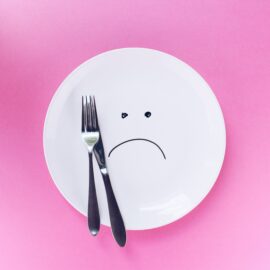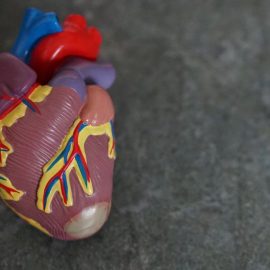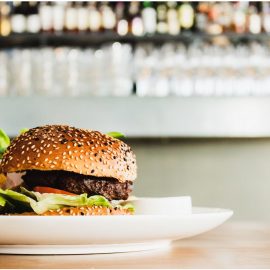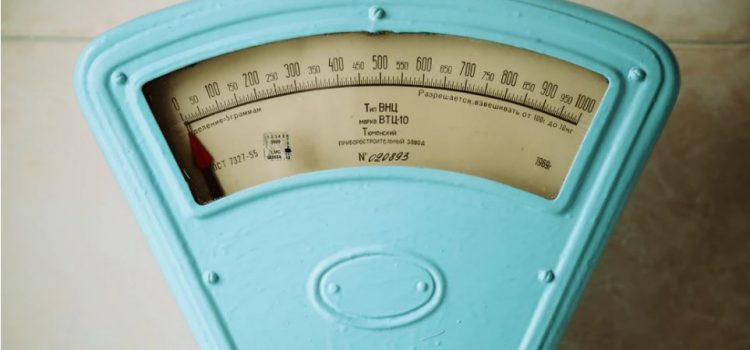
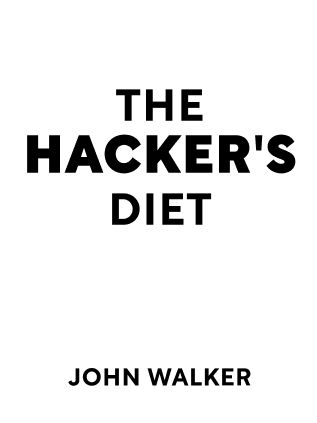
This article is an excerpt from the Shortform book guide to "The Hacker's Diet" by John Walker. Shortform has the world's best summaries and analyses of books you should be reading.
Like this article? Sign up for a free trial here .
What is the EWMA formula? Why shouldn’t you rely on raw, weight loss measurements to track your progress?
EWMA stands for the Exponentially Weighted Moving Average. In The Hacker’s Diet, John Walker suggests using this formula for tracking your weight loss progress rather than focusing on the daily weight fluctuations which can be caused by a number of variables. The EWMA formula, on the other hand, tracks the trend of your weight loss.
Here is how to use the EWMA formula to track your weight loss.
Measuring Weight
Tracking calories is critical — it’s easy to overeat, and having a strict boundary will make it less likely for you to eat past your goal. And if you perfectly measure your calorie intake, then it should correspond well with your weight loss.
But how many calories you’re eating isn’t your final goal — your weight is. Your weight keeps you honest — if you’re not losing pounds as quickly as you think you should be, then you’re probably eating more than you think, or you burn fewer calories than you estimated. Either way, you need to adjust.
If you’re serious about losing weight, you should measure your weight everyday. To do otherwise is to try to drive without looking at the road. Would you drive by looking at the road for 1 second, then covering your eyes for 4 seconds before looking again?
The Typical Weight Loss Path
If you’ve ever tried to lose weight and measure your body, the path your body takes is startling.
- When you first start dieting, you seem to lose 5 pounds in 2 days. Wow! What progress!
- Then it quickly slows to a trickle. This is the plateau of misery.
- You get antsy and frustrated, so you have a cheat meal. You stand back on the scale, and you weigh 4 pounds more. My god! All your progress is lost!
- As you weigh yourself through the days, your spirits rise and fall with your readings. Plateaus are crushing (you’re enduring so much pain! How could you barely have lost any weight!) while the temporary losses are short-lived.
No wonder you’re afraid to step on the scale! It’s like a slot machine of punishment.
The reason for this fluctuation is water. Any real weight loss (i.e. loss of fat) will happen with less than 0.3 pounds per day — and this corresponds to a high 1000 calorie deficit, which is more difficult than most can sustain. Any variation that happens beyond 0.3 pounds is almost entirely water.
- Keep this in mind — if you drink 2 liters of water, that amounts to around 4.5 pounds. Your retention of this water is going to blow out any minor weight loss that happens.
- Your weight can fluctuate by up to 5 pounds in a single day! If you have a low-salt day, followed by eating half a pizza at night, your body will store pounds of water.
- We say “almost entirely water” because differences in the weight of food that you eat also make a difference — if you have more food in your gut after a large meal, that will add more mass that will be excreted later.
- Every time you step on the scale, it’s as though you were measuring a water tank filled to an unknowable level by a mischievous elf who’s sabotaging your progress.
Charting Weight Loss With the EWMA Formula
As a result, your day-to-day weight can be volatile. On some days, you lose 3 pounds, and it feels like a huge victory. On others, you gain 3 pounds, and it feels like all your effort was for nothing. Here’s what a weight chart looks like:
So there are high day-to-day fluctuations. But what you really care about is finding the underlying trend — how much weight are you really losing, day to day?
The answer lies in a technique that stock traders use to figure out trends from the minute-to-minute noise: the exponentially weighted moving average. In simple terms:
- Instead of focusing on each day in isolation, you average out a longer period of days — say, 10 days.
- But taking just a simple arithmetic average lags behind the real trend. Your more recent days should be treated as more important than 10 days ago. Therefore, the most recent day has a stronger contribution to the average, and each day before that has a progressively lower contribution. Thus, recent days are “weighted” more strongly, and later days are weighted less strongly in an exponential way.
Applied to the very same weight chart above, the EWMA formula produces this much smoother line:
Wouldn’t following the orange line feel much less volatile and let you keep your sanity? Large drops in weight still move the trend line down, but their impact is blunted by the weighting. Likewise, one-day spikes in weight after a cheat meal don’t budget the trend line that much.
If you continuously lose weight, think of today’s weight as a sinker, dragging the trend down.
This average line is also useful when you’ve reached your goal weight and want to prevent reversions. This lets you detect a gradual uptrend in your weight, even while your day-to-day weight fluctuates.
Technical Details About EWMA
The details of setting up exponentially weighted moving averages are out of scope of this summary, but the author provides weight tracking spreadsheets here. If you’re curious, you can learn the details of the math here.
If you do set up an EWMA, the author recommends a smoothing value of 0.9 can be aligned with a shift of about 10.

———End of Preview———
Like what you just read? Read the rest of the world's best book summary and analysis of John Walker's "The Hacker's Diet" at Shortform .
Here's what you'll find in our full The Hacker's Diet summary :
- An engineer’s approach to weight loss
- Why losing weight is so hard even though it's so simple
- What you have to do to maintain your ideal weight for the rest of your life

